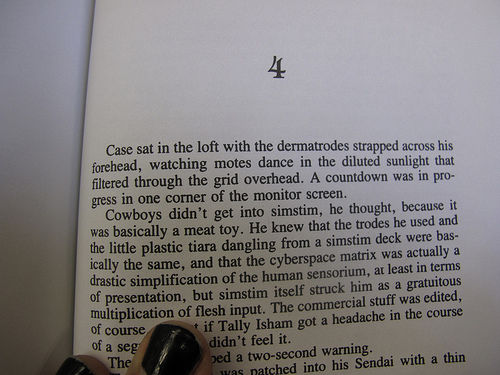Yesterday I was soaking wet riding my bike around town. So I pulled over at PNCA where I go to school to spend a couple hours drying off in the library and while there I checked out some quality reading material. Then I decided that I would try to do a series of posts with Amber on the local Libraries of Portland.
I thought I would point out a few really interesting books I ran across and invite everyone to enjoy the old fashioned internets of YOUR LOCAL LIBRARY!
What is Property
The First Book that caught my eye was What is Property by Pierre-Joseph Proudhon, a French political philosopher who wrote extensively on anarchy and was the first person known to have referred to himself as an anarchist. His most famous writings include The General Idea of the Revolution in the 19th Century (1852) and System of Economic Contradictions; or The Philosophy of Poverty (1846). PIERRE-JOSEPH PROUDHON (1809-1865)
I am particularly fond of this quote here “Property is impossible, because it is the Mother of Tyranny.” This book looks stellar. I read it a little bit at school but decided to grab a couple of different ones for this week and come back and pick this up next week.

The Art of Participation
The next book I checked out was called The Art of Participation edited by Rudolph Frieling. It’s apparently associated with an exhibit of the same title currently showing at the SFMOMA and I am reading that one right now. I wish I had seen this when I was in SF last week. Sigh.
Again I don’t think that the topic is revolutionary or new but I am excited to see more comprehensive anthologies of art and relational aesthetics work come out and for it to be encapsulated under new language like this. There is a merging of conversations between art, the social, media, communication and visual studies that is being re-presented again and again over the last 50 years.
This survey covers the rich and varied history of participatory art, from early happenings and performances to current practices that demand audience interaction. As the hallmarks of Web 2.0—browsing, sharing, collecting, producing—increasingly permeate every aspect of society, this timely project reveals the ways in which artists and viewers have approached the creation of open works of art. The featured artists include Marina Abramovic and Ulay, Vito Acconci, Joseph Beuys, John Cage, Janet Cardiff, Lygia Clark, Kit Galloway and Sherrie Rabinowitz, Dan Graham, Hans Haacke, Allan Kaprow, Lynn Hershman Leeson, Antoni Muntadas, Yoko Ono, Nam June Paik, and Erwin Wurm.
Original essays by Rudolf Frieling, Boris Groys, Robert Atkins, and Lev Manovich identify seminal moments in participatory practice from the 1950s to the present day. A rich array of plates introduce work by all the artists in the accompanying exhibition, with reproductions of significant projects by other major figures—from Helio Oiticica, Joan Jonas, and Gordon Matta-Clark to Rirkrit Tiravanija and SUPERFLEX—rounding out the survey. 215 color illustrations.
(Thanks Amazon! for the description)
As you can see the book is filled with popular works and TONS of color plates like this one by Erwin Wurm. Who makes some rather beautiful work in my opinion.
Erwin Wurm (born 1954) is an Austrian artist. Since the late 1980′s he has developed an ongoing series of “One Minute Sculptures,” in which he poses himself or his models in unexpected relationships with everyday objects close at hand, prompting the viewer to question the very definition of sculpture. He seeks to use the “shortest path” in creating a sculpture — a clear and fast, sometimes humorous, form of expression. As the sculptures are fleeting and meant to be spontaneous and temporary, the images are only captured in photos or on film. (Wikipedia)
The Uncanny: Experiments in Cyborg Culture
The next book I picked up, and one I am currently reading is The Uncanny: Experiments in Cyborg Culture edited by Bruce Grenville. Besides great plates, and really good essays there are whole excerpts from Donna Haraways < a href="">Cyborg Manifesto and Wililam Gibson’s < a href="http://en.wikipedia.org/wiki/Neuromancer">Neuromancer
The essay I am reading right now is called Sheborgs and Cyberfems
Maybe someone has read these books and can suggest some other ones? Has anyone gone to the library recently and run across some really great books?
Back before I spent so much time online I went to the library quite a lot. Of course it didn’t hurt that my boyfriend was a librarian. I still spend a lot of time researching via books and essays and I find that that tangible nature of the medium really speaks to me. These days I buy most of my books instead of checking them out because I like to highlight them, underline them and generally wear them out. I usually keep books on me for a while. My whole Summer 2008 I carried around Lawrence Lessigs The Future of Ideas. Now when I look at the book I think of Summer. I think that the PNCA library is a really great, cozy spot. Go check it out!







2 Comments
Thanks so much for the book notice. These links are amazing, as are the titles, as is the story that the books are embedded into.
I am really diggin’ on the art of participation one. We should go over these on Sunday. Plus I wanna bring you by there! Next stop we got to go to the downtown library.